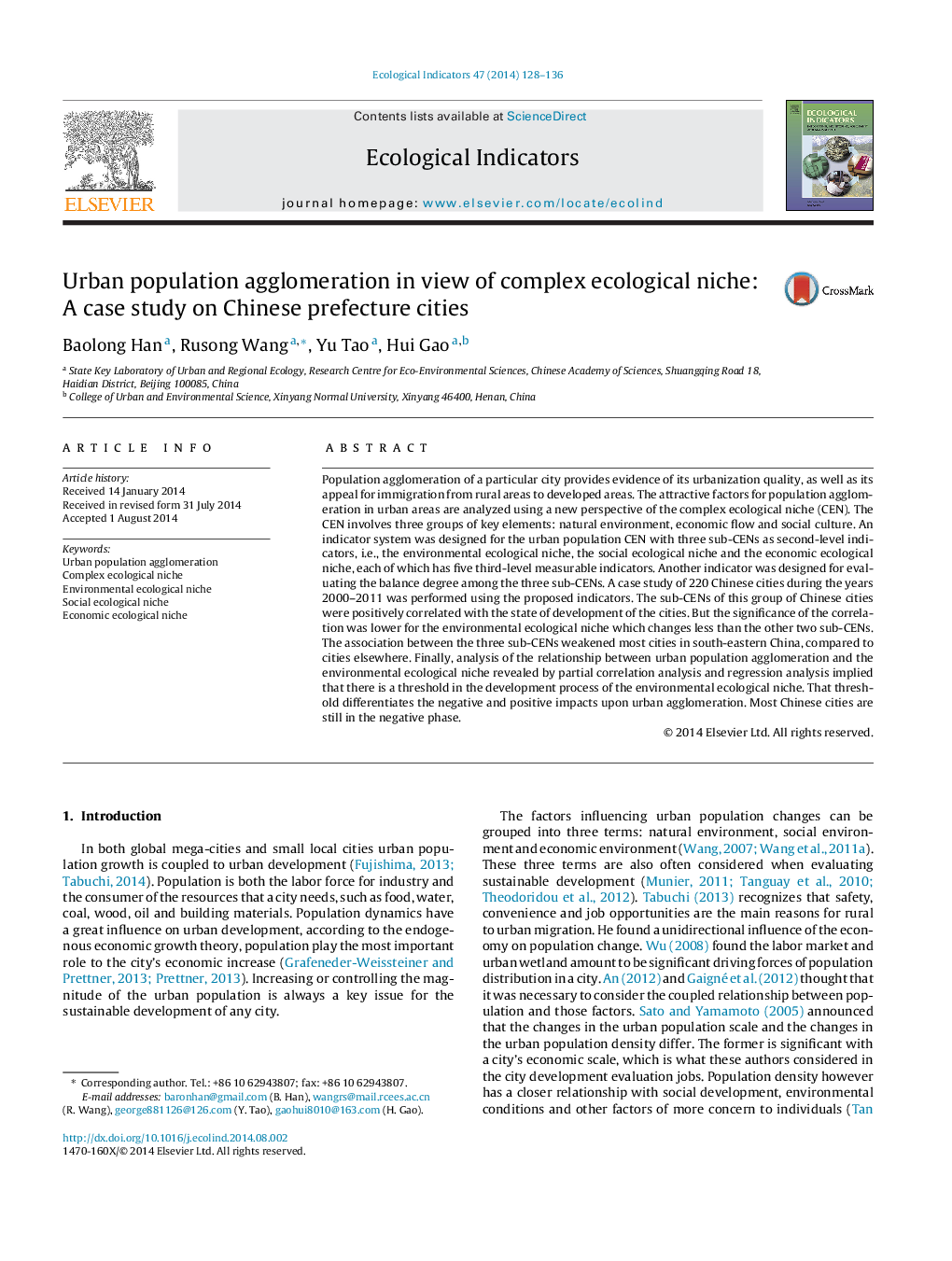| Article ID | Journal | Published Year | Pages | File Type |
|---|---|---|---|---|
| 4373022 | Ecological Indicators | 2014 | 9 Pages |
:Population agglomeration of a particular city provides evidence of its urbanization quality, as well as its appeal for immigration from rural areas to developed areas. The attractive factors for population agglomeration in urban areas are analyzed using a new perspective of the complex ecological niche (CEN). The CEN involves three groups of key elements: natural environment, economic flow and social culture. An indicator system was designed for the urban population CEN with three sub-CENs as second-level indicators, i.e., the environmental ecological niche, the social ecological niche and the economic ecological niche, each of which has five third-level measurable indicators. Another indicator was designed for evaluating the balance degree among the three sub-CENs. A case study of 220 Chinese cities during the years 2000–2011 was performed using the proposed indicators. The sub-CENs of this group of Chinese cities were positively correlated with the state of development of the cities. But the significance of the correlation was lower for the environmental ecological niche which changes less than the other two sub-CENs. The association between the three sub-CENs weakened most cities in south-eastern China, compared to cities elsewhere. Finally, analysis of the relationship between urban population agglomeration and the environmental ecological niche revealed by partial correlation analysis and regression analysis implied that there is a threshold in the development process of the environmental ecological niche. That threshold differentiates the negative and positive impacts upon urban agglomeration. Most Chinese cities are still in the negative phase.
